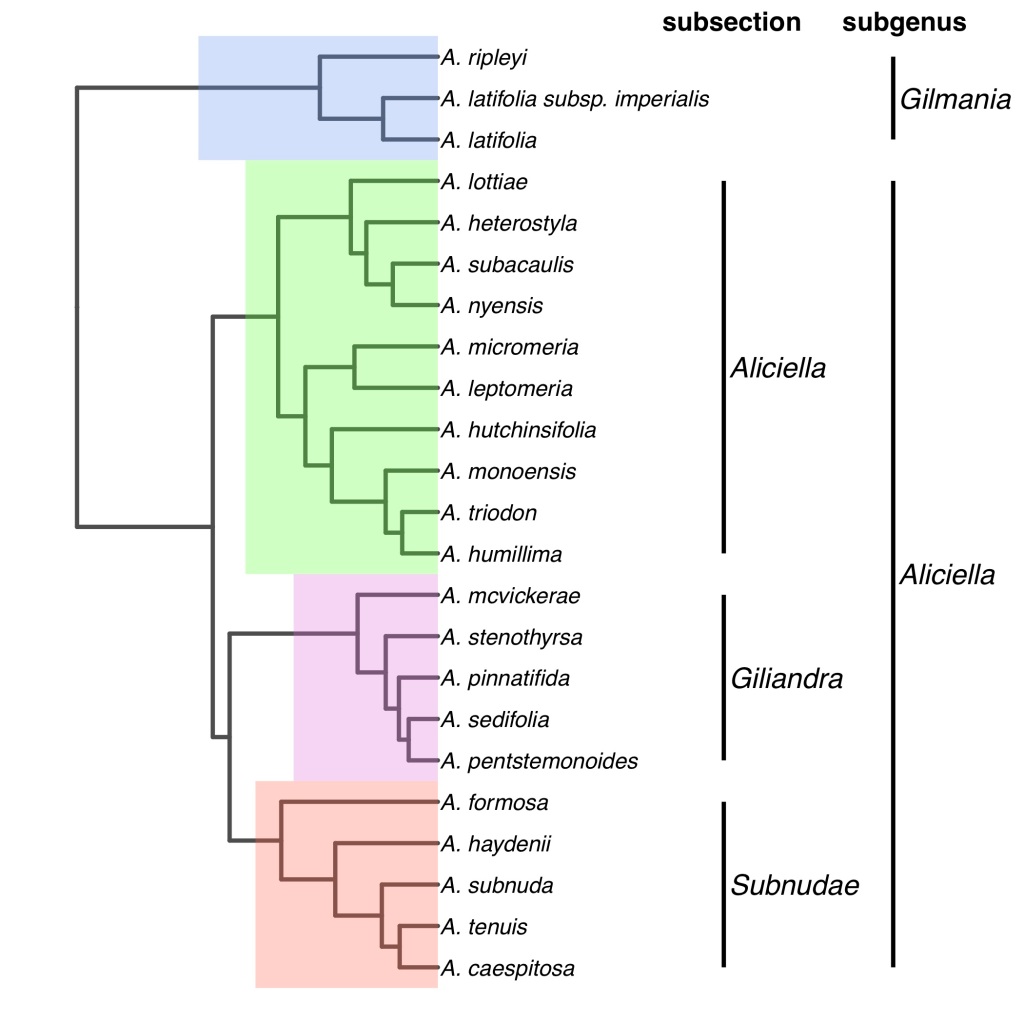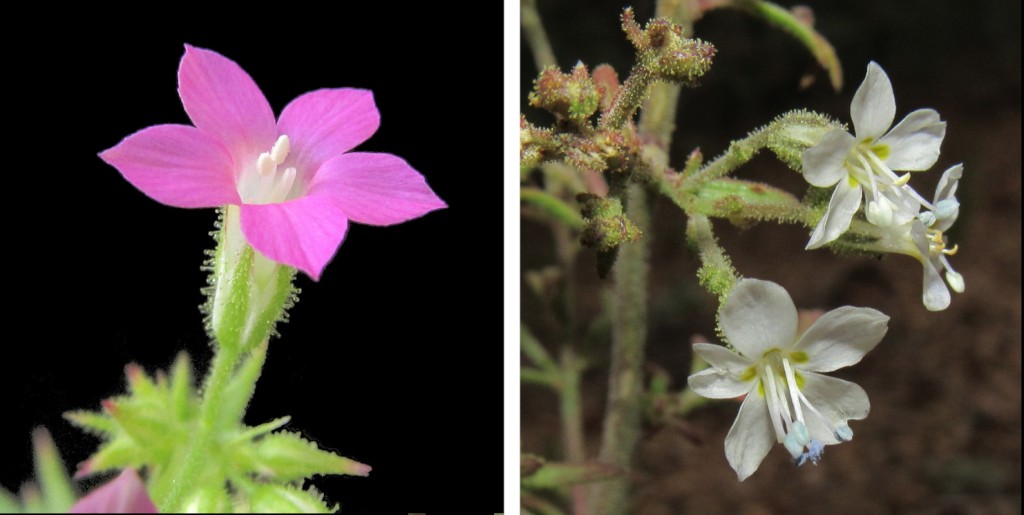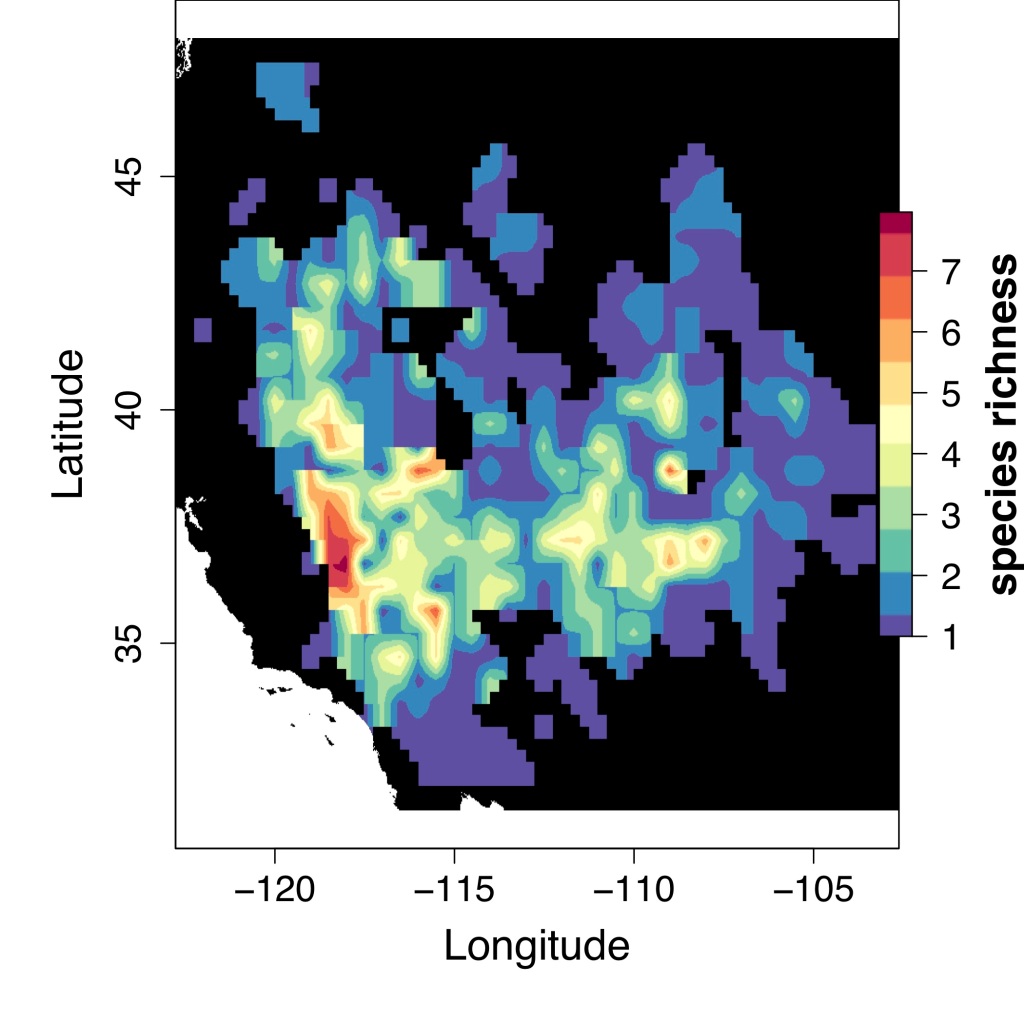Aliciella is a cytologically complex genus of 24 species of rosette-forming perennials, annuals, and biennials endemic to western North America. Although historically included in Gilia, molecular data clearly shows that Aliciella is unrelated to Gilia; occurring in a different tribe. Morphologically, Aliciella differs from Gilia in having seed coats which do not produce copious mucilage when wetted, and also does not produce anthocynains in its glandular trichomes (Porter 1998).
Aliciella heterostyla is the only heterostylous Polemoniaceae (Cochrane & Day 1994).
Phylogeny
Based on morphological and molecular data Porter (1998) broke Aliciella into two subgenera (Aliciella and Gilmania). Subgenus Aliciella contains two sections (Aliciella and Giliandra) with section Aliciella containing two subsections (Aliciella and Subnudae). More recent phylogenetic evidence has questioned the monophyly of section Alicella (Rose & Sytsma 2021).

Biogeography
Aliciella is most diverse in the Great Basin and Mojave Desert. The perennial species are most common in the Colorado Plateau.
Taxonomy
Gilia karnenae (Kass and Welsh 2013) should be included in Aliciella, however no formal combination has been made. Initial placement in Gilia as opposed to Aliciella particularly strange given that G. karnenae is described in the protologue as being similar to both A. caespitosa and A. tenuis, as well as compared to A. haydenii in the discussion. Moreover, the revision of Porter (1998) is not cited. Kass and Welsh seem to justify their nomenclature by following the antiquated idea of allowing for paraphyletic genera. This transfer is further and unambiguously supported by molecular data (Saunders 2019).
- Aliciella caespitosa (A. Gray) J.M. Porter
- Aliciella cliffordii J.M. Porter
- Aliciella formosa (Greene) J.M. Porter
- Aliciella haydenii (A. Gray) J.M. Porter
- A. haydenii (A. Gray) J.M. Porter subsp. crandallii (Rydb.) J.M. Porter
- A. haydenii (A. Gray) J.M. Porter subsp. haydenii
- Aliciella heterostyla (S. Cochrane & A.G. Day) J.M. Porter
- Aliciella humillima (Brand) J.M. Porter
- Aliciella hutchinsifolia (Rydb.) J.M. Porter
- Aliciella “karnenae” ( = Gilia karnenae Kass & S.L. Welsh)
- Aliciella latifolia (S. Wats.) J.M. Porter
- A. latifolia (S. Wats.) J.M. Porter subsp. imperialis (S.L. Welsh) J.M. Porter
- A. latifolia (S. Wats.) J.M. Porter subsp. latifolia
- Aliciella leptomeria (A. Gray) J.M. Porter
- Alicella lottiae (A.G. Day) J.M. Porter
- Aliciella mcvickerae (M.E. Jones) J.M. Porter
- Aliciella micromeria (A. Gray) J.M. Porter
- Aliciella monoensis J.M. Porter & A.G. Day
- Aliciella nyensis (Reveal) J.M. Porter
- Aliciella penstemonoides (M.E. Jones) J.M. Porter
- Aliciella pinnatifida (A. Gray) J.M. Porter
- Aliciella ripleyi (Barneby) J.M. Porter
- Aliciella sedifolia (Brandegee) J.M. Porter
- Alicieilla stenothyrsa (A. Gray) J.M. Porter
- Aliciella subacaulis (Rydb.) J.M. Porter
- Aliciella subnuda (A. Gray) J.M. Porter
- Aliciella tenuis (F.J. Sm. & Neese) J.M. Porter
- Aliciella trinodon (Eastw.) Brand
References
Cochrane, S. A., & Day, A. G. (1994). A heterostylous Gilia (Polemoniaceae) from central Nevada. Madroño, 41(2), 120-127.
Porter, J. M. (1998). Aliciella, a recircumscribed genus of Polemoniaceae. Aliso, 17(1), 23-46.
Saunders, T. C. (2019). Resolving Relationships and Revealing Hybridization in Aliciella Subsection Subnuda (Polemoniaceae). Brigham Young University.
Tommerup, M. M. (2001). The evolution of heterostyly and allopolyploidy in Aliciella (Polemoniaceae). The Claremont Graduate University.
Welsh, S. L., & Kass, R. (2013). A distinctive new taxon: Gilia karenae (Polemonaceae). Western North American Naturalist, 74(1), 138-140.


